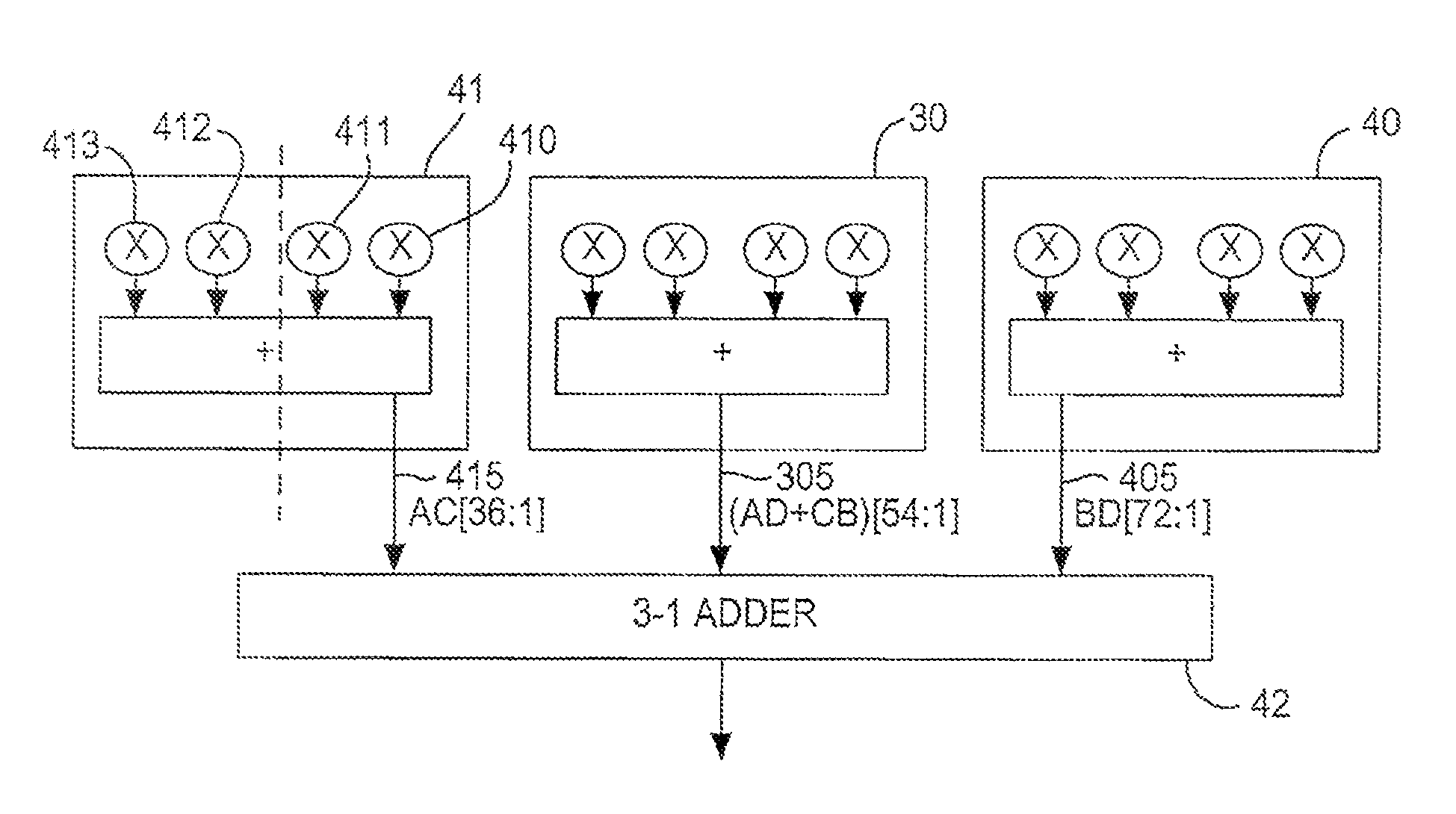Large multiplier for programmable logic device
a programmable logic and multiplier technology, applied in the field of programmable logic devices, can solve the problems of increasing complexity of applications for which plds are used, slow and less efficient, and consuming general-purpose resources that might be put to other uses, so as to reduce or eliminate the reliance on general-purpose programmable resources and facilitate the performance of multiplication
- Summary
- Abstract
- Description
- Claims
- Application Information
AI Technical Summary
Benefits of technology
Problems solved by technology
Method used
Image
Examples
embodiment 50
[0040]In embodiment 50, each half-block 51, 52 (and half-block 53, but not all components are shown because only one multiplier 530 is used from that half-block 53) preferably has four 18-bit-by-bit multipliers 510-513, 520-523, preferably arranged in pairs 510-511, 512-513, 520-521 and 522-523, with the output of the members of each pair preferably being added together by respective 54-bit adders 541-544 after the output of one member of pair has been shifted left 18 bits by respective shifter 55. One or more of shifters 55 may be programmably bypassable (not shown) as in the embodiment of FIGS. 3 and 4, above, but in this embodiment, for performing a 54-bit-by-54-bit multiplication, shifters 55 preferably are not bypassed (even if they are bypassable).
[0041]In the specialized processing block described in above-incorporated application Ser. No. 11 / 447,472, the output of adder 541, and the output of adder 542 after being shifted left 18 bits by shifter 545, would be added by 3:2 co...
embodiment 70 (fig.7)
[0050]Embodiment 70 (FIG. 7) can compute the real part of a 36-bit-by-18-bit complex multiplication, as well as the imaginary part if signed multiplication is required. For example, the real part can be rewritten as:
Real: [((AH×B)AL×B)]+[((CH×(−D))CL×(−D))]
In embodiment 70, as in embodiment 30, the two first level shifters 311, 331 are used, and the second level shifter 37 is bypassed. In addition, at least the second multiplicands of multipliers 33 and 34 are not forced to unsigned mode, allowing the negated value of D to be input to those multipliers. This requires that the negation of D take place in other circuitry or in programmable logic of the PLD. The inputs to multipliers 33, 34 can be made unforced by connecting a respective one of multiplexers 71, 72 to the respective sign control inputs 73 of multipliers 33, 34, allowing each sign control input 73 to be connected either to ground (forced to unsigned) or to the sign control signal associated with the respective multiplica...
PUM
 Login to View More
Login to View More Abstract
Description
Claims
Application Information
 Login to View More
Login to View More - R&D
- Intellectual Property
- Life Sciences
- Materials
- Tech Scout
- Unparalleled Data Quality
- Higher Quality Content
- 60% Fewer Hallucinations
Browse by: Latest US Patents, China's latest patents, Technical Efficacy Thesaurus, Application Domain, Technology Topic, Popular Technical Reports.
© 2025 PatSnap. All rights reserved.Legal|Privacy policy|Modern Slavery Act Transparency Statement|Sitemap|About US| Contact US: help@patsnap.com



